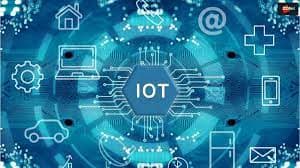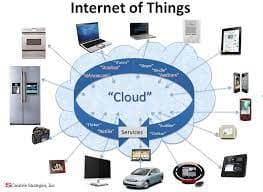
The Internet of Things (IoT) is a term used to describe the growing network of devices that are connected to the internet and can communicate with each other. These devices range from simple sensors to complex machines and are used in a variety of settings, from homes and offices to factories and cities. In this article, we will explore the concept of the Internet of Things, its potential applications, and the challenges that lie ahead.
What is the Internet of Things?
The Internet of Things is the network of physical objects, or "things," that are embedded with sensors, software, and other technologies that enable them to collect and exchange data. These objects can be anything from smart thermostats and door locks to industrial machinery and transportation systems.
The IoT is made possible by advancements in technology, including the widespread availability of high-speed internet, the development of wireless communication protocols, and the decreasing cost of sensors and other technologies.

Potential Applications of the Internet of Things
The Internet of Things has the potential to transform a wide range of industries, from manufacturing and transportation to healthcare and agriculture. In manufacturing, the IoT can be used to monitor and optimize production processes, reducing waste and improving efficiency. In transportation, the IoT can be used to monitor and optimize the performance of vehicles, reducing fuel consumption and improving safety.
In healthcare, the IoT can be used to monitor patients remotely, allowing for earlier detection of health problems and reducing the need for hospitalization. In agriculture, the IoT can be used to monitor soil conditions and weather patterns, allowing farmers to optimize crop yields and reduce water usage.
The IoT also offers new opportunities for businesses to collect and analyze data, enabling them to make more informed decisions and improve their operations. For example, retailers can use the IoT to monitor inventory levels and track customer behavior, allowing them to offer personalized experiences and optimize their supply chain.
Challenges Ahead
While the Internet of Things offers many opportunities, there are also several challenges that need to be addressed. One of the biggest challenges is security, as the increasing number of connected devices creates new opportunities for cyber attacks. As IoT devices often lack adequate security features, they can be vulnerable to hacking, which can lead to data breaches and other security threats.
Another challenge is the issue of interoperability, or the ability of different systems to work together seamlessly. As the number of IoT devices continues to grow, it is becoming increasingly important for different devices and platforms to be able to communicate with each other.
Finally, there is the challenge of privacy, as the increasing amount of data collected by IoT devices raises concerns about how this data is being used and who has access to it. As IoT devices become more ubiquitous, it will be important to establish clear guidelines for the collection, storage, and use of this data.
Conclusion
The Internet of Things has the potential to transform a wide range of industries, from manufacturing and transportation to healthcare and agriculture. By collecting and analyzing data from connected devices, businesses can make more informed decisions and improve their operations. However, there are also several challenges that need to be addressed, including security, interoperability, and privacy. As the IoT continues to grow and evolve, it will be important to address these challenges and establish clear guidelines for the responsible use of this technology.
